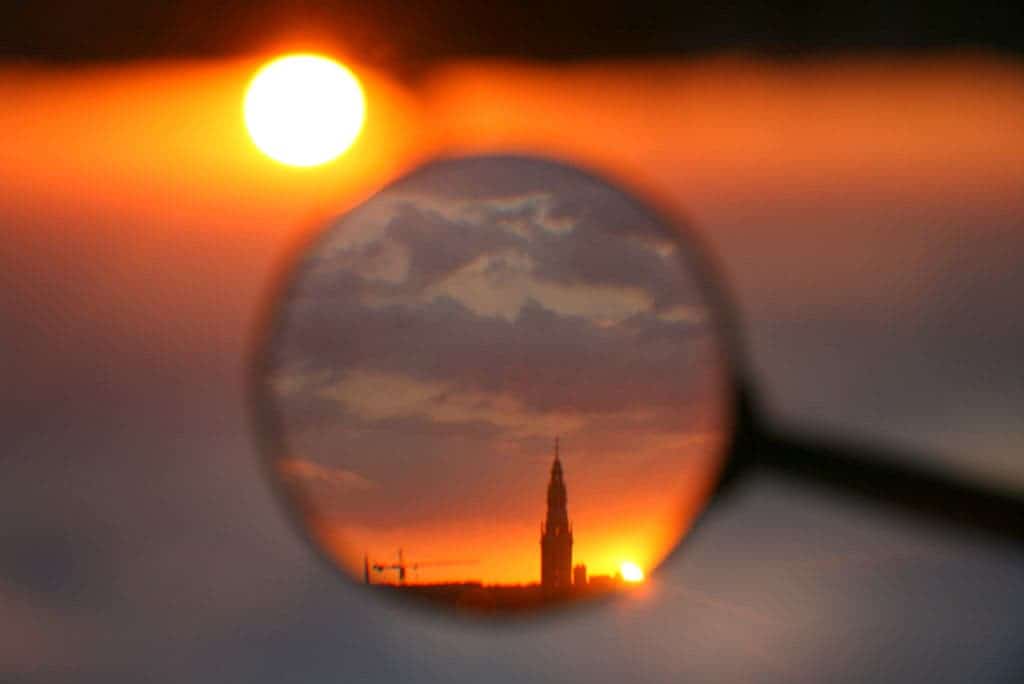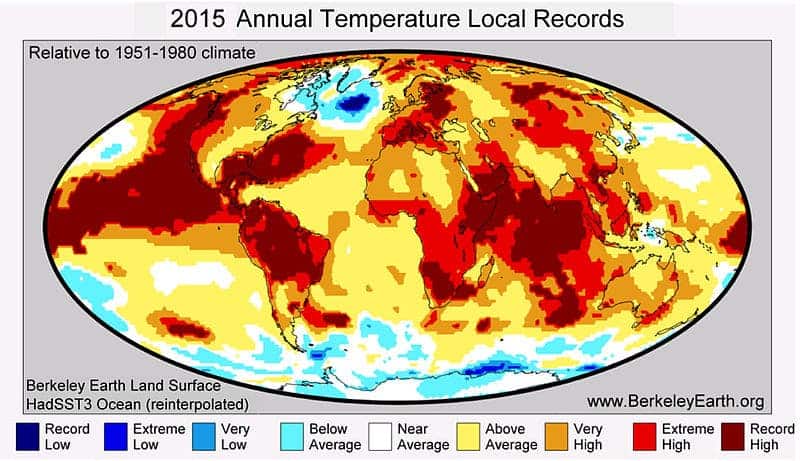A lot of ink has been spilled on climate change and the effect of greenhouse gases emissions lately. And for good reason. But how do some gases make the planet warmer? What is the link between CO2 and the climate? Let’s find out.

How it all starts
With precious few exceptions, all the energy on Earth derives from the sun. Sunlight carries this energy (mostly in the form of heat, visible light, and radiation that we cannot perceive) from the fusing nuclei in the star’s core to our planet’s surface.
Part of this energy keeps our planet alive. Winds blow to appease pressure differences in the atmosphere, which are caused by differences in temperature. Plants gobble up sunlight to fuse carbon to hydrogen in photosynthesis. Even the coal and oil we burn are akin to chemical batteries storing the sun’s energy.
Part of that input of energy, however, doesn’t stay here. It gets reflected — by clouds, oceans, plants, ice caps — back into space. While every other celestial body out there does this, each will differ in how much of the incoming energy it reflects. This ratio of incoming energy to reflected energy is known as a planet’s ‘albedo‘, from the Latin word for ‘white’. Albedo is measured on a scale from 0 (no reflection) to 1 (complete reflection), and the Earth currently sits at about 0.30 on the albedo scale (measured in the 1970s), meaning it reflects some 30% of all incoming sunlight.
To summarise, conditions on a planet’s surface depend on a tug of war between the energy output of its host star and the planet’s capacity to reflect or capture it.
What is the greenhouse effect?
The greenhouse effect is caused by greenhouse gases in the atmosphere preventing heat from radiating out into space. When trapped heat radiates out of the surface, these gases absorb and contain energy inside the atmosphere.

While albedo reflects incoming sunlight and the energy it carries away from the surface of the Earth, its atmosphere works as a temperature battery. Clouds reflect about 23% of incoming solar energy, but they — alongside the rest of the atmosphere — also absorb roughly the same amount, 23%. What remains of the incoming solar energy is either reflected (7% of total) or absorbed (47%) by the surface.
Certain compounds in the atmosphere (most notably water vapor, carbon dioxide, and methane) are very good at absorbing heat (infrared radiation) and later emit it back out. Greenhouse gases capture most of that 23% of the incoming energy absorbed in the atmosphere.
All in all, we’re actually very lucky to have a plump atmosphere that contains some greenhouse gases — they help ‘spread’ energy around evenly. A planet like Mars, with its thin atmosphere, is plagued by temperatures of both extremes: scorching in the sunlight, freezing in the shadow. The same goes for Mercury — despite being the closest planet to the sun, nighttime temperatures here drop as low as -290° F(-180° C).
However, this is also where our climate troubles start. Greenhouse gases in the atmosphere absorb energy as long as their environment is at a higher energy state (they absorb infrared light when their environment is warmer than them). The atmosphere and surface, then, absorb most energy during the day and release most of it at night. These gases radiate energy in all directions, meaning some of that is released towards the Earth’s surface to be reabsorbed.
When they release it, some of the energy goes back into the ground. The higher the concentration of greenhouse gases in the atmosphere, the more energy gets trapped this way. Rinse and repeat enough times, and you get to where we are today — we’ve pumped so much CO2 into the atmosphere that it’s making a noticeable change in average temperatures.
Why is it a problem for us today?
Strictly speaking, climate change itself isn’t the problem — its consequences are.
For all our technology and know-how, society today is completely dependent on nature for its survival. We rely on natural processes to clean our water, fatten the fish we capture, pollinate our crops, generate the oxygen we need. We really enjoy the sea level staying where it is, and we’ve constructed various social and cultural mechanisms to adapt to the climatic and ecological particularities of the places we live in. Climate change — spurred on by the greenhouse gases we generate — threatens to destroy these natural systems we so dearly rely on.
When they change, we and our society will have to change as well, in order to survive. But the fact of the matter is that we have evolved, biologically and culturally, economically, and socially, to fit the mold our environments provided. Adapting to a post-climate-change world will entail social and economic upheaval the likes of which humanity has never faced before.
Another issue with the greenhouse effect, and by extension climate change, is that it has a lot of inertia. It takes time to fix. Even directly scrubbing CO2 out of the atmosphere will take time: there are roughly 3.200 gigatons of CO2 in Earth’s atmosphere right now (410 ppm), and we’d need to scrub out some 1.440 gigatons (45%) off that to get to pre-industrial levels.
This inertia is only compounded with respect to the effects of climate change. The world’s ecosystems will need time to recover even after greenhouse gas levels in the atmosphere have been reduced — and there’s no guarantee they’ll go back to being what they were. Every species lost clears an evolutionary niche that evolution will fill with something else. There’s no guarantee that ‘something else’ will be to our liking or be useful for us.
Finally, there is this spot of trouble:
The Greenhouse effect is self-enforcing
This is actually one of the greatest dangers facing humanity at the moment for a very simple reason: we’ve helped get it started, but greenhouse-type effects are perfectly capable of driving themselves on.

Image and caption credits Berkeley Earth / Wikimedia
Water vapor, for example, is a greenhouse gas, so it helps trap heat. Ice sheets are vast expanses of white, so they increase our planet’s albedo. A warmer climate will increase atmospheric concentrations of the first while reducing areas of the latter. The increase in greenhouse gases coupled with a reduction in albedo will warm the climate even more.
We are already seeing this positive feedback cycle at work. Warmer average temperatures, for example, are causing organic matter buried in permafrost to decompose, which releases carbon dioxide. The polar ice sheets are reeling and fragmenting under warmer conditions, reducing their ability to reflect energy back to space. These are just a few examples of how the greenhouse effect can get out of hand.
Cape Town in South Africa narrowly avoided running completely out of water after three years of relentless drought. The drought in California which ended last year was also spurred on by climate change. And there are things we just don’t know about.
“Large, abrupt climate changes have repeatedly affected much or all of the Earth, locally reaching as much as 10°C change in 10 years. Available evidence suggests that abrupt climate changes are not only possible but likely in the future, potentially with large impacts on ecosystems and societies,” reads the a consensus study report published by the National Research Council in 2002.
“We do not yet understand abrupt climate changes well enough to predict them.”
Taken to the extreme, like the state of Venus today shows, the cycle can repeat until our planet becomes a hot rock drenched in boiling acid. Not a pleasant prospect.
But, as the authors of the study themselves notes, “there is no need to be fatalistic; human and natural systems have survived many abrupt changes in the past, and will continue to do so. Nonetheless, future dislocations can be minimized by taking steps to face the potential for abrupt climate change.”






